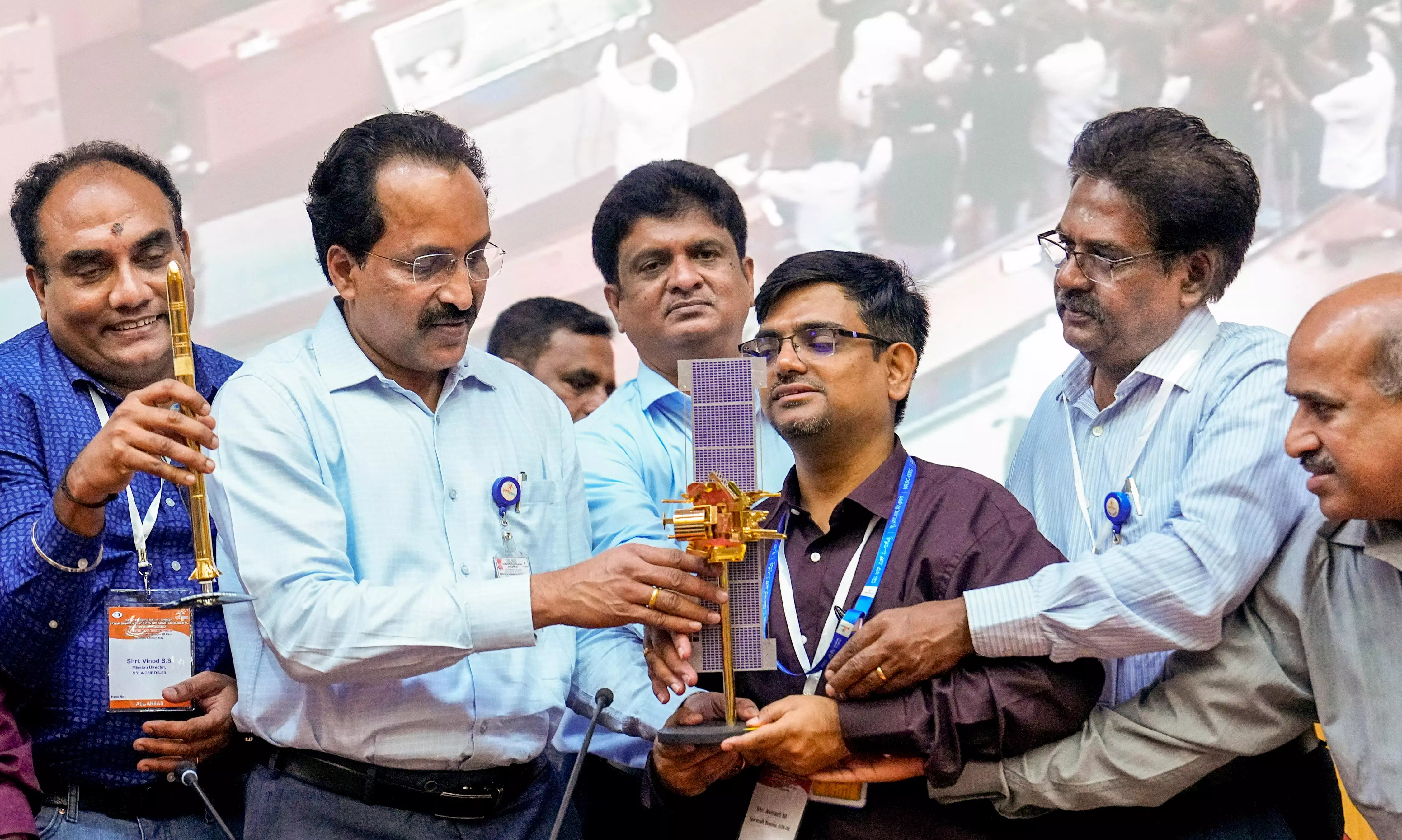ISRO Prepares for December Launch of Unmanned Gaganyaan Mission
Some of the Gaganyaan hardware has reached the Satish Dhawan Space Centre at Sriharikota, and the integration of the crew module was going on at the Vikram Sarabhai Space Centre, Thiruvananthapuram, Isro chairman S. Somanath said

Tirupati: Soon after the successful launch of its Earth Observation Satellite (EOS-08) aboard the Small Satellite Launch Vehicle (SSLV)-D3 from the spaceport at Sriharikota, the Indian Space Research Organisation (Isro) announced that it was preparing for a big launch in December: An unmanned Gaganyaan spacecraft.
When completed, the Gaganyaan will carry India’s first astronauts from Indian soil.
Some of the Gaganyaan hardware has reached the Satish Dhawan Space Centre at Sriharikota, and the integration of the crew module was going on at the Vikram Sarabhai Space Centre, Thiruvananthapuram, Isro chairman S. Somanath said. The crew escape hardware was also ready
“Today, we are working on the first mission of the Gaganyaan called G1. The first unmanned mission. The status today is the rocket, the S200 stage, the L1, C32 stage are all at Satish Dhawan Space Centre,” he said.
“So, we have to complete with full wiring and testing should be done. Our target is by November the whole system will reach here, possibly by December launch will happen,” he said.
Somanath was talking to reporters after the successful launching the third and final developmental flight of the SSLV earlier in the day. The success would pave the way for launch of commercial missions using the smallest vehicle by Isro's commercial arm, NewSpace India Ltd (NSIL).
The 34-metre, 120-tonne SSLV lifted off at 9.17 am from the Sriharikota spaceport, completing the third and final development flight of the SSLV programme. Isro chairman Somanath reported that the 175.5 kg EOS-08 satellite was precisely placed into its intended 475-km circular orbit 17 minutes after launch.
The SSLV, designed to cater to the growing market for launching small satellites to low-Earth orbit, offers affordable and rapid access to space. For comparison, India’s heaviest rocket, the Launch Vehicle Mark3 (LVM3, formerly GSLV), is estimated to launch 10 tonnes to low Earth orbit.
The first launch of the SSLV in August 2022 was unsuccessful, the second flight in February last year met its mission objectives.
To a query about the requirement for industries to partner with the ISRO for taking up commercial launch of rockets, Somanath said a day-long meeting was recently held with the industry and added: “I am hoping that the first technology transfer will happen in India between Isro and industry. The Request for Interest (RFI) was released and as a single (entity) or as consortia, a company can show interest on the technology transfer and what were the expectations from ISRO and how to qualify for such missions,” he said.

